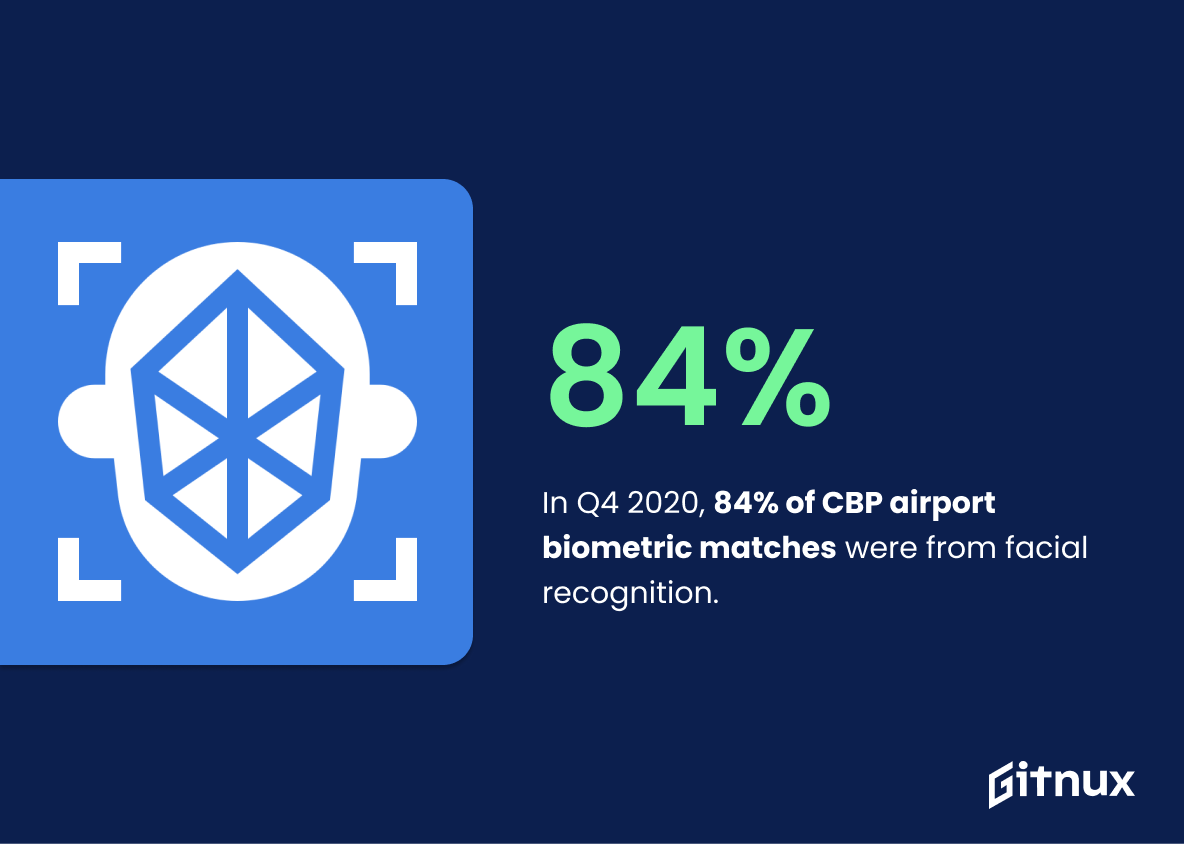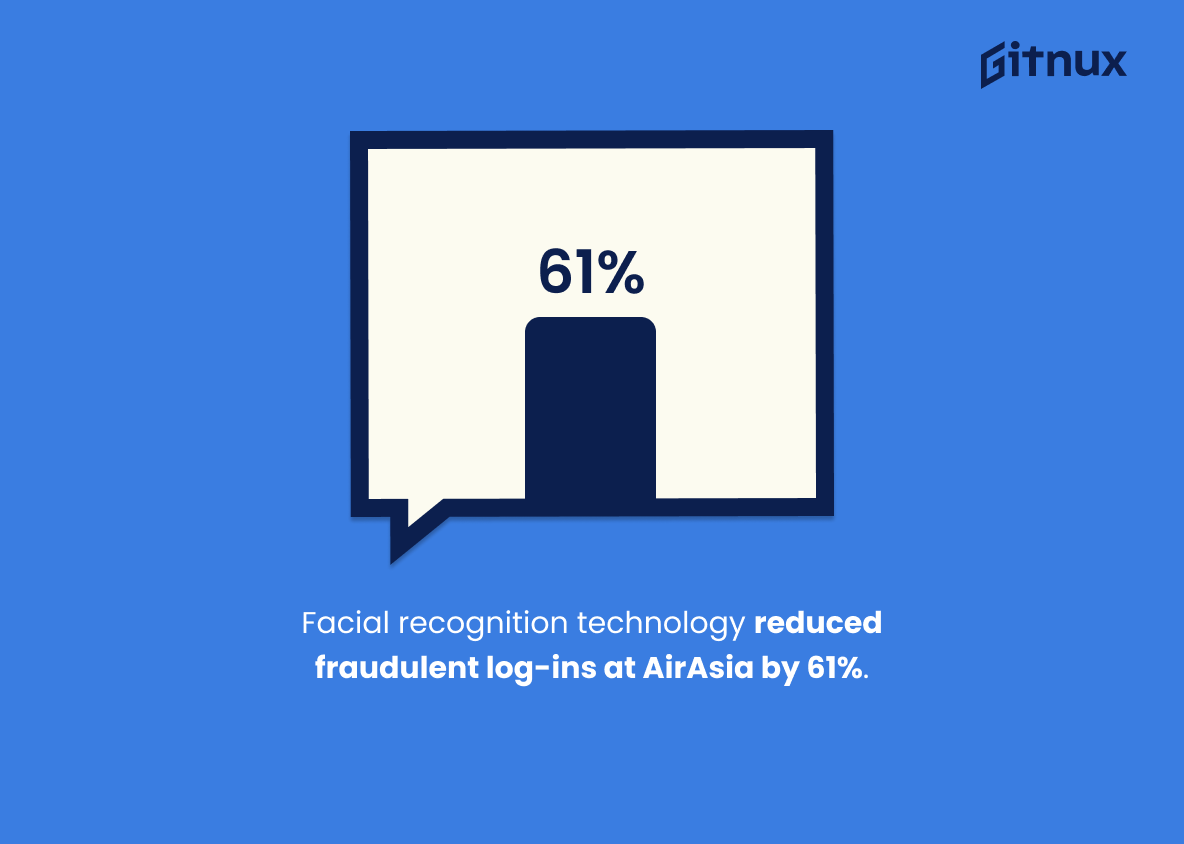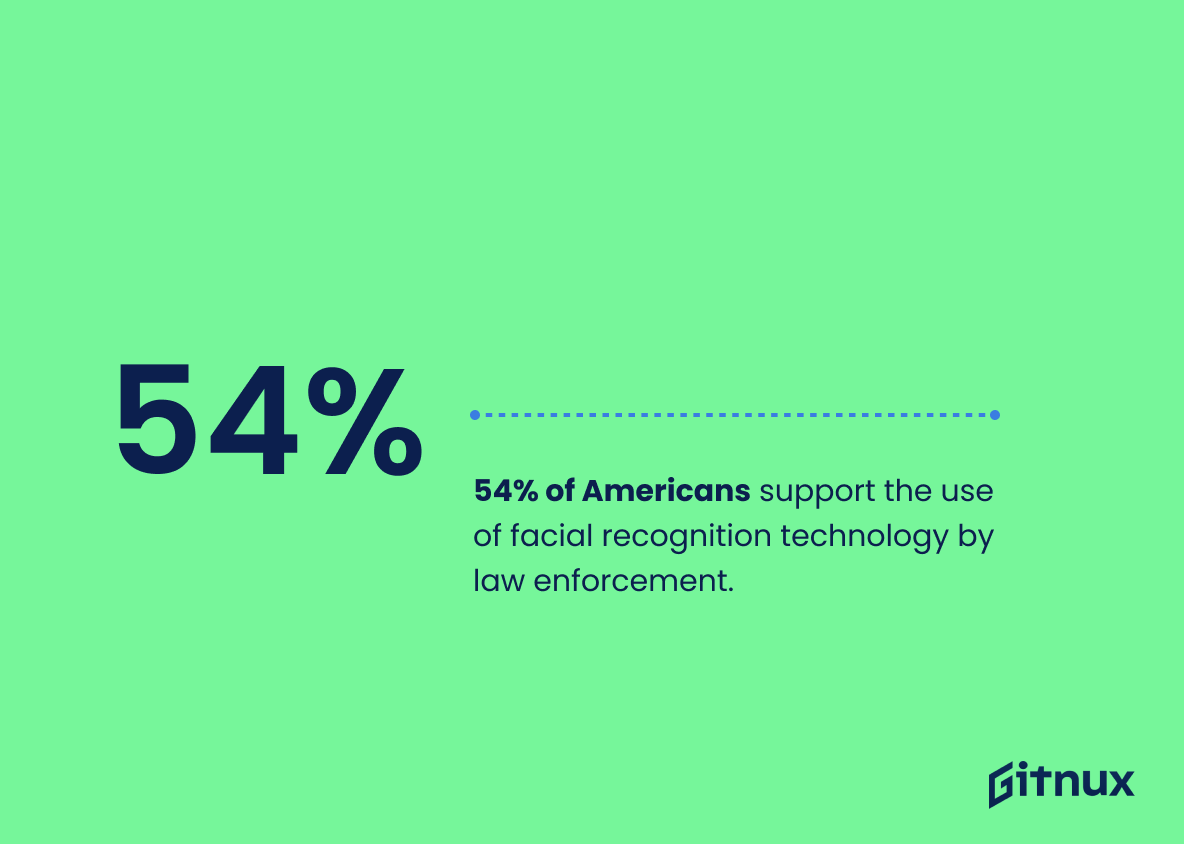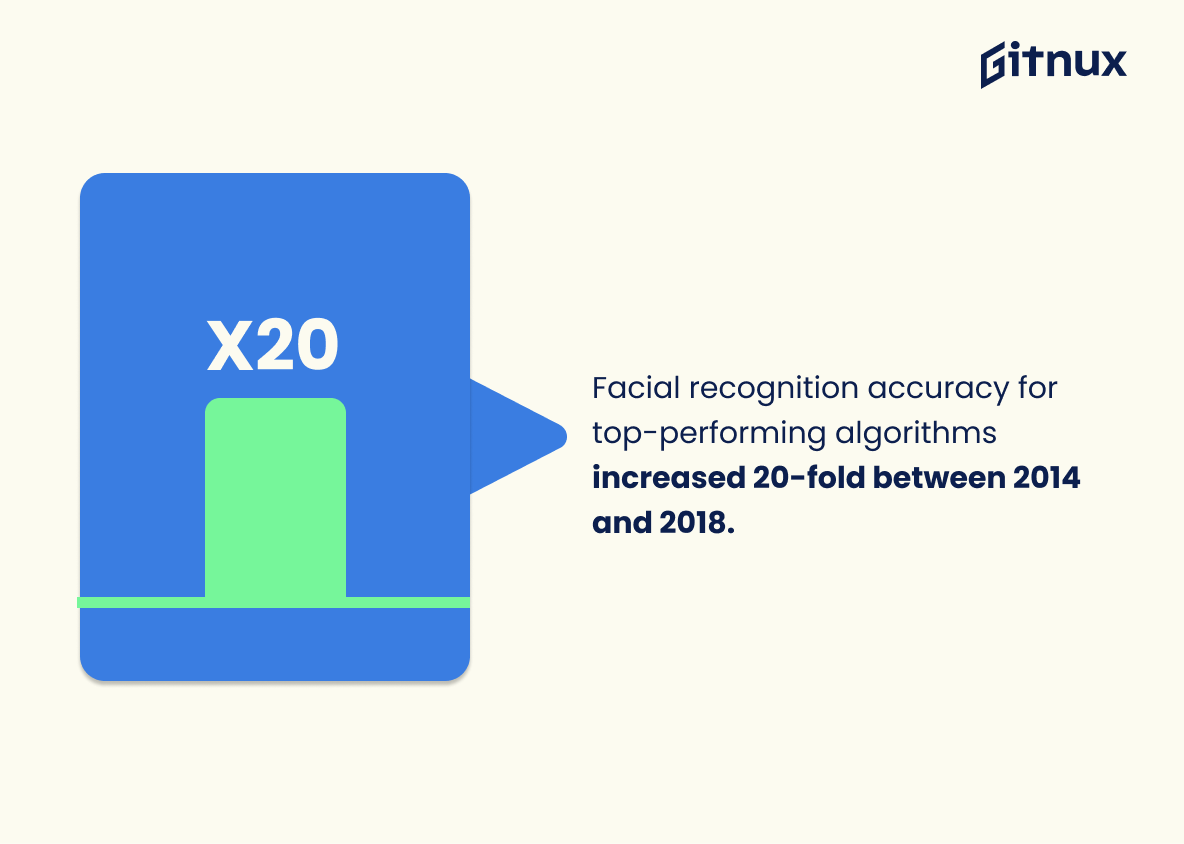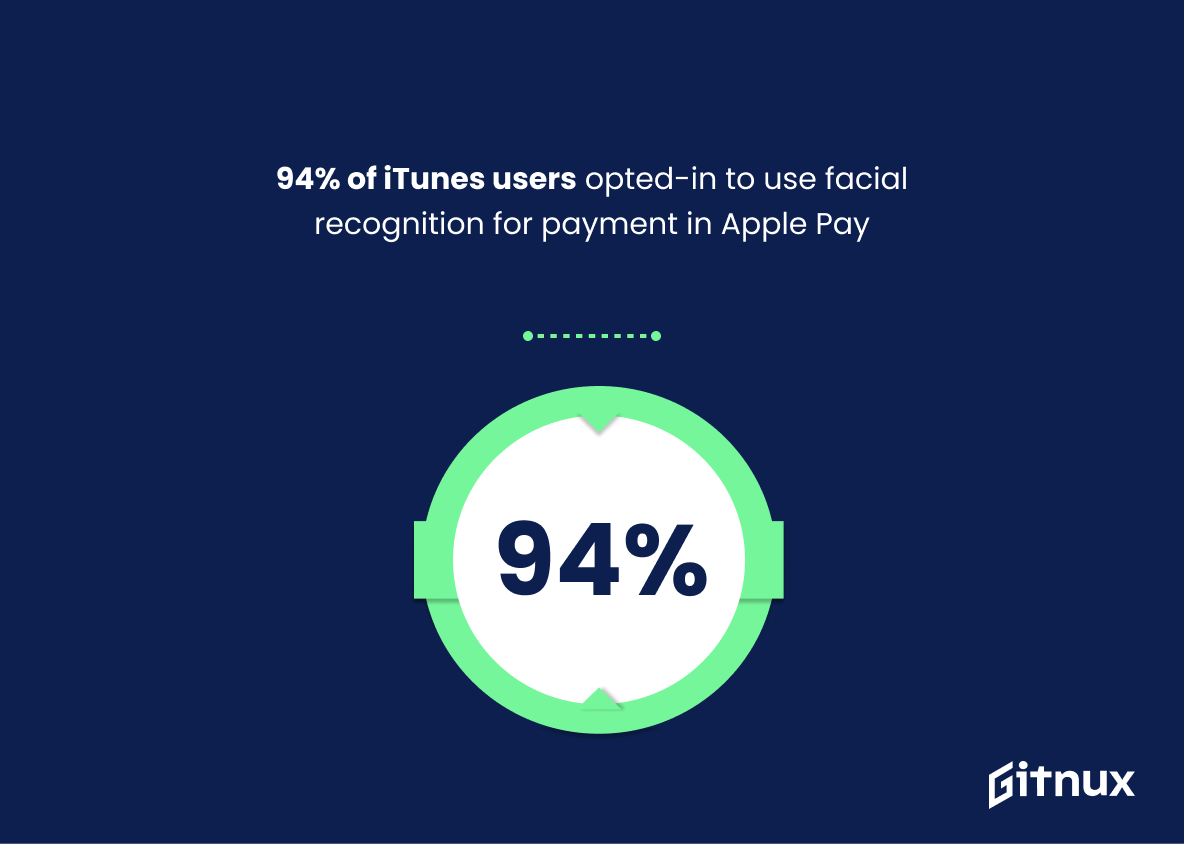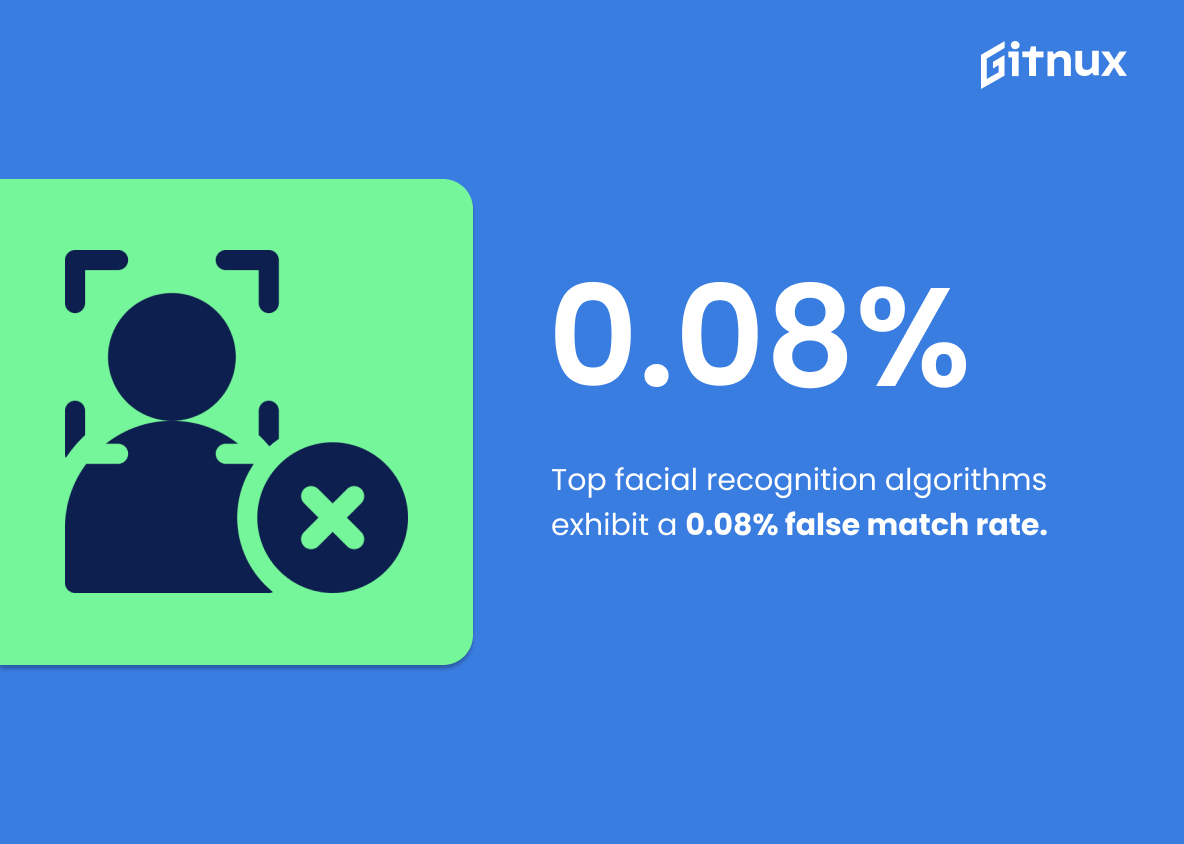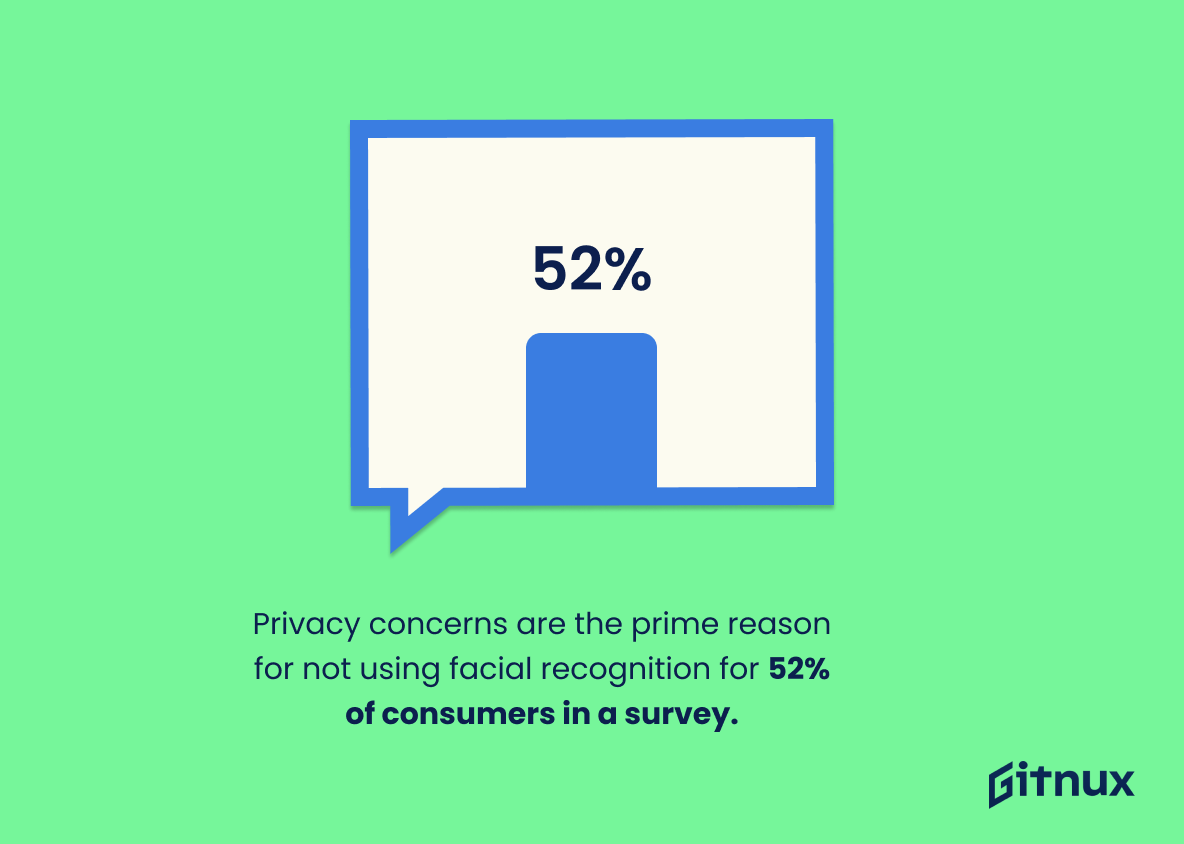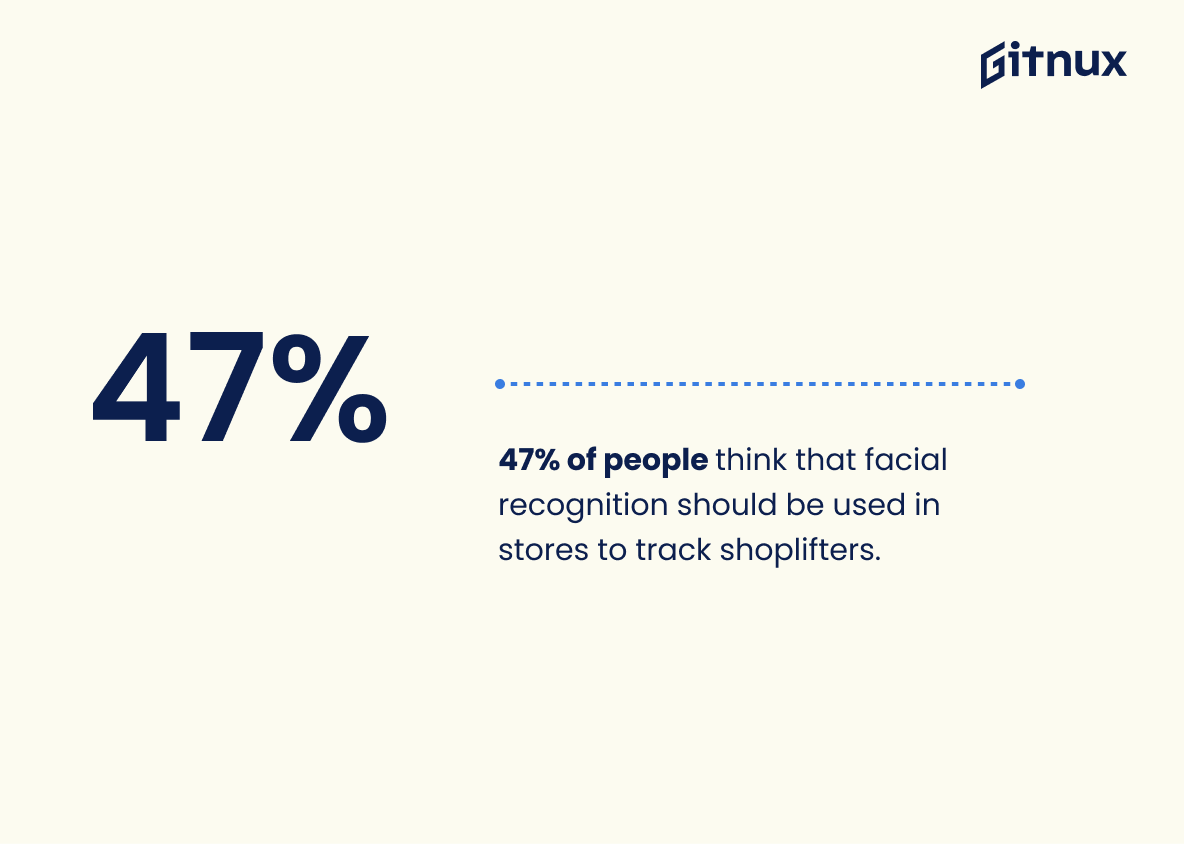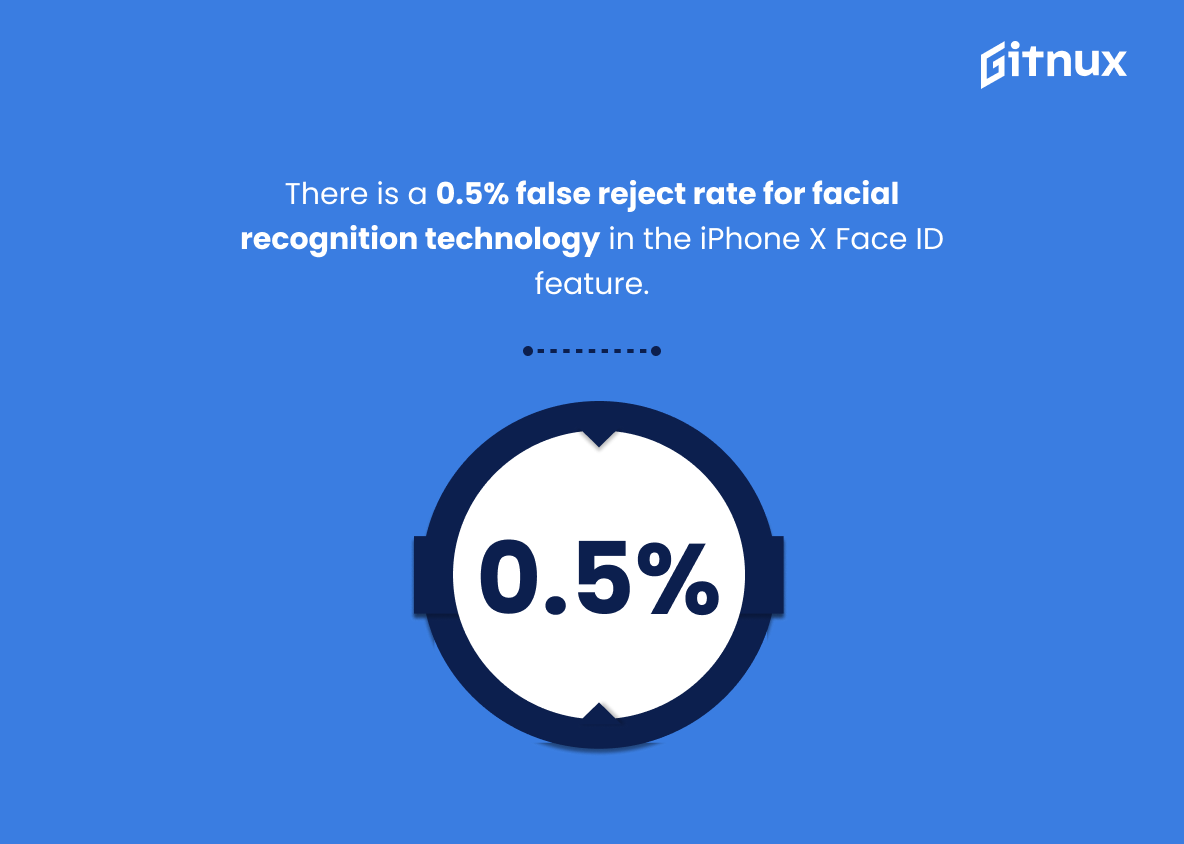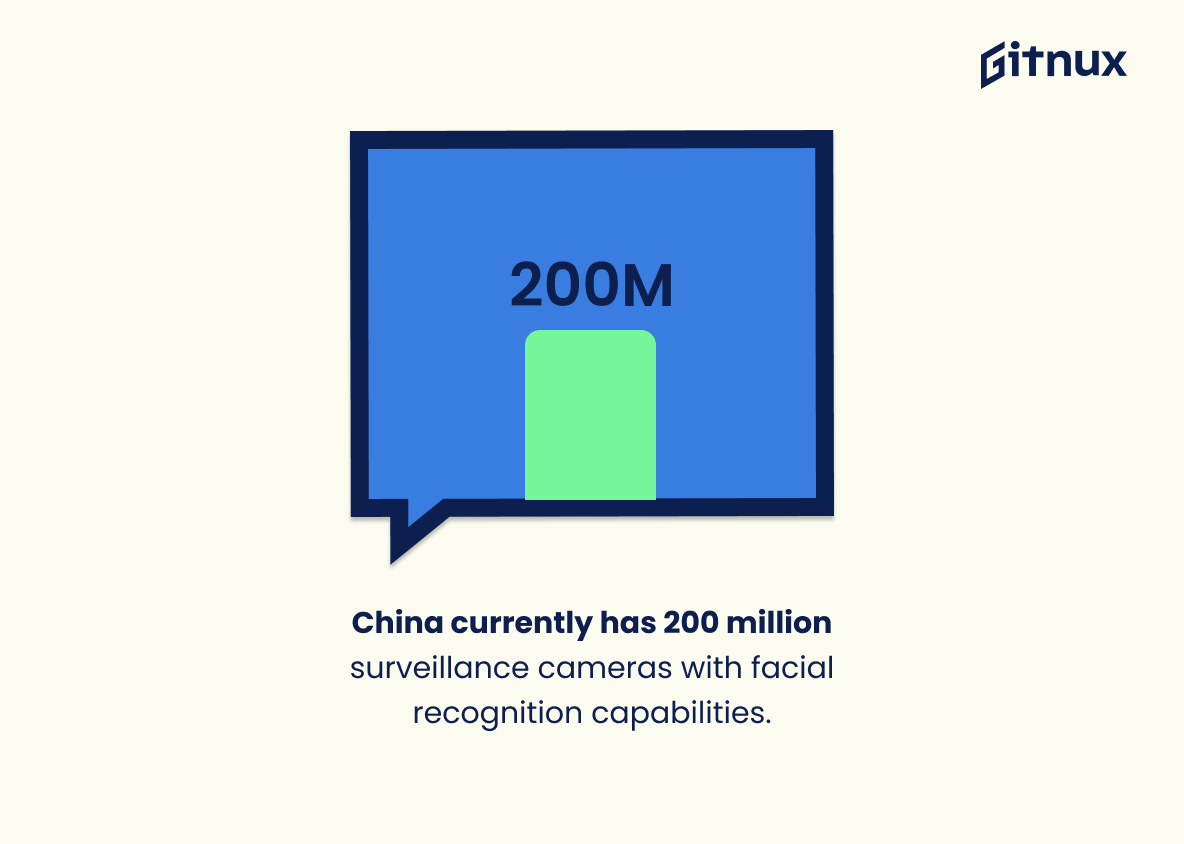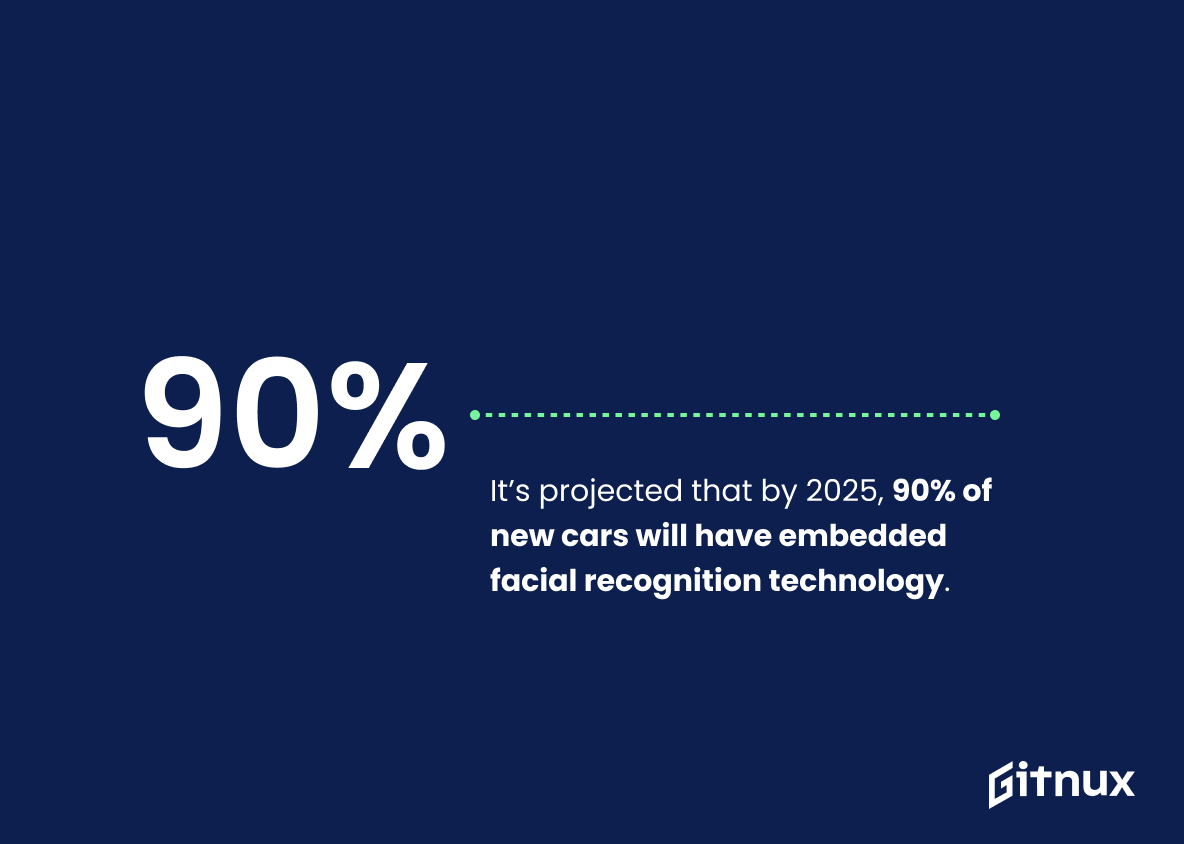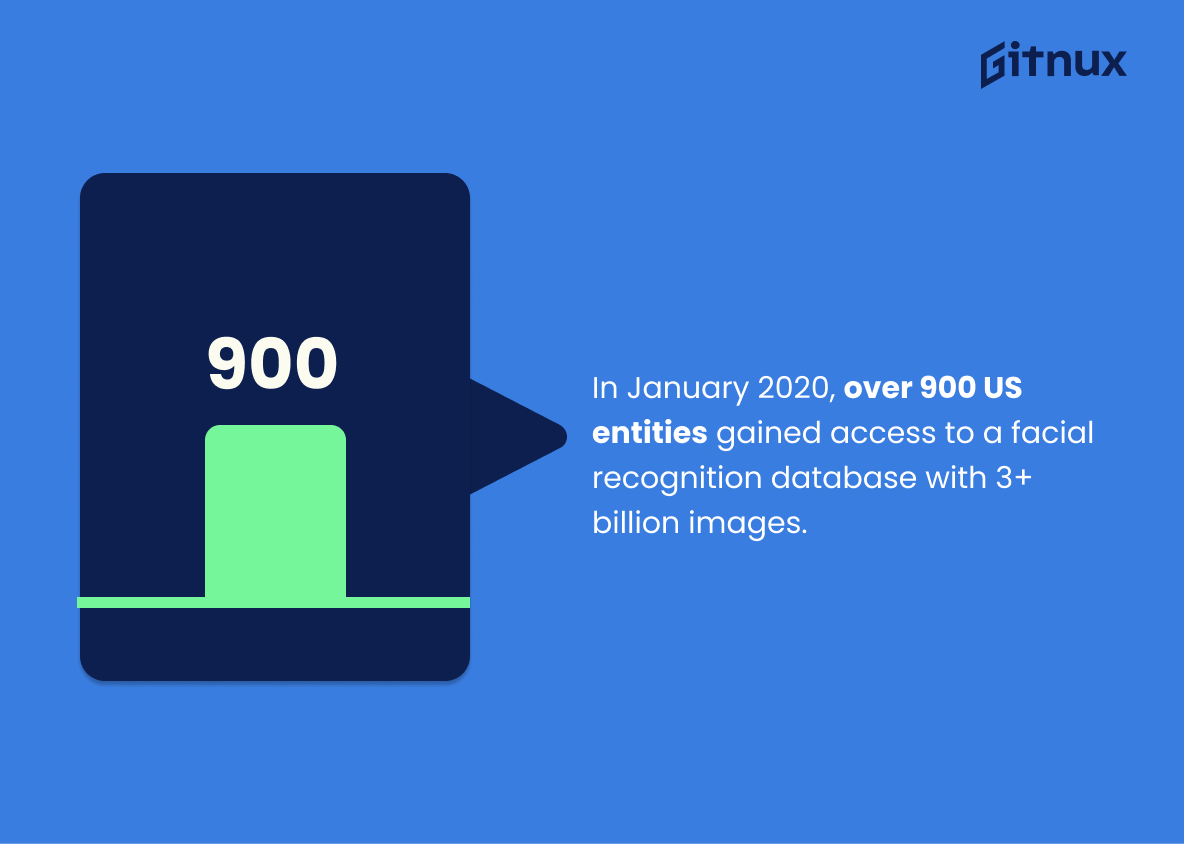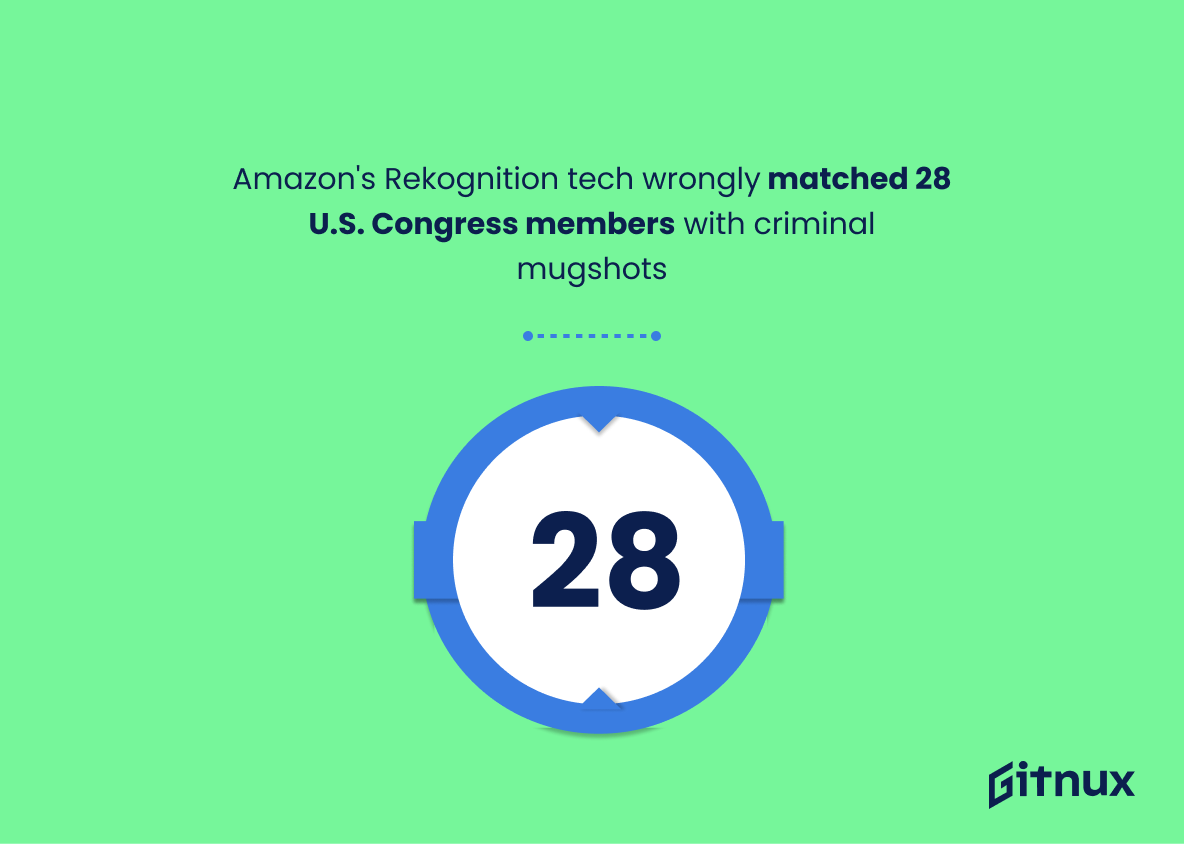Facial recognition technology has become increasingly popular in recent years, with its use ranging from law enforcement to retail stores. According to Markets and Markets, the facial recognition market is expected to grow from USD 3.2 billion in 2019 to USD 7.0 billion by 2024 at a CAGR of 16.6%. By 2020, 1 billion smartphones will have facial recognition technology according to Counterpoint Research while 84% of U.S Customs and Border Protection airport biometric matches were made using this method during Q4 2020 as reported by Biometric Update.
AirAsia was able reduce fraudulent log-ins by 61% through the implementation of facial recognition technology according Forbes Magazine while 86% US millennials are open for using it for travel purposes per Mavenir’s survey results . 54% Americans support the use of facial recognition techonology used by law enforcement based on Pew Research Center findings whereas NIST reports that accuracy increased 20 fold between 2014 and 2018 with top performing algorithms exhibiting 0.08 % false match rate . 94 percent iTunes users opted-in for Apple Pay’s Facial Recognition feature as revealed Infosecurity Magazine article , however privacy concerns remain an issue since 52 percent consumers cited it as prime reason not opting into such services per Safety report . 47 percent people think that retailers should be allowed access face scanning technologies track shoplifters which Mordor Intelligence projects global market value $9 93 Billion 2024 , iPhone X Face ID feature exhibits 0 5 False Reject Rate Forrester study reveals 71 Percent Retail Business Decision makers see useful security tool finally China currently 200 Million Surveillance Cameras Facial Recognition Capabilities CNBC 38 Consumers interested everyday transactions Ipsos 90 New Cars Embedded Technology BCC 2025 Amazon Rekognition Incorrectly Matched 28 Members Congress Criminal Mugshots ACLU Report.
Facial Recognition Statistics Overview
84% of U.S. Customs and Border Protection airport biometric matches in Q4 2020 were from facial recognition.
This statistic is a powerful indicator of the effectiveness of facial recognition technology in the U.S. Customs and Border Protection airport system. It demonstrates that facial recognition is a reliable and accurate method of identifying travelers, and that it is being used with great success. This statistic is a testament to the efficacy of facial recognition technology, and is an important piece of evidence for anyone looking to understand the impact of facial recognition on the travel industry.
Facial recognition technology reduced fraudulent log-ins at AirAsia by 61%.
This statistic is a testament to the effectiveness of facial recognition technology in curbing fraudulent log-ins at AirAsia. It shows that the implementation of this technology has had a significant impact on the security of the airline’s systems, reducing the risk of unauthorized access by a whopping 61%. This is a clear indication that facial recognition technology is a powerful tool for protecting digital assets and ensuring the safety of customers.
54% of Americans support the use of facial recognition technology by law enforcement.
This statistic is significant in the context of a blog post about Facial Recognition Statistics because it provides insight into the public opinion of the technology. It shows that a majority of Americans are in favor of its use by law enforcement, indicating that the technology is widely accepted and could be beneficial in helping to solve crimes.
Facial recognition accuracy for top-performing algorithms increased 20-fold between 2014 and 2018.
This statistic is a testament to the remarkable progress made in facial recognition technology over the past few years. It highlights the incredible strides that have been taken in the field, and demonstrates the potential of facial recognition technology to revolutionize the way we interact with the world. This statistic is a powerful reminder of the potential of facial recognition technology, and its importance in the modern world.
94% of iTunes users opted-in to use facial recognition for payment in Apple Pay
This statistic is a testament to the trust that iTunes users have in facial recognition technology for payment. It shows that the majority of users are comfortable with using this technology, which is a strong indication that facial recognition is becoming increasingly accepted as a secure and reliable payment method. This statistic is a powerful indicator of the growing popularity of facial recognition technology, and it is an important piece of evidence to consider when discussing the current state of facial recognition statistics.
Top facial recognition algorithms exhibit a 0.08% false match rate.
This statistic is a testament to the accuracy of facial recognition algorithms, indicating that they are able to accurately identify individuals with a very low rate of error. This is an important factor to consider when discussing the efficacy of facial recognition technology, as it demonstrates that the technology is reliable and trustworthy.
Privacy concerns are the prime reason for not using facial recognition for 52% of consumers in a survey.
This statistic is a powerful indicator of the public’s attitude towards facial recognition technology. It shows that a majority of consumers are not comfortable with the idea of using facial recognition, likely due to the potential for privacy violations. This is an important point to consider when discussing the use of facial recognition technology, as it highlights the need for companies to ensure that their use of the technology is secure and respects the privacy of their customers.
47% of people think that facial recognition should be used in stores to track shoplifters.
This statistic is significant in the context of a blog post about Facial Recognition Statistics because it provides insight into the public opinion on the use of facial recognition technology in stores. It shows that a majority of people are in favor of using facial recognition to track shoplifters, indicating that the technology is seen as a viable solution to the problem of shoplifting. This statistic can be used to inform the discussion around the use of facial recognition in stores and to provide a better understanding of the public’s opinion on the matter.
In 2024, the global facial recognition systems market is projected to be worth $9.93 billion.
This statistic is a clear indication of the growing importance of facial recognition systems in the global market. It shows that the technology is becoming increasingly popular and is being adopted by more and more businesses and organizations. This is a sign that facial recognition is becoming an integral part of our lives and is likely to continue to grow in the coming years.
There is a 0.5% false reject rate for facial recognition technology in the iPhone X Face ID feature.
This statistic is significant in the context of facial recognition statistics because it highlights the accuracy of the technology. A 0.5% false reject rate indicates that the iPhone X Face ID feature is highly reliable and can be trusted to accurately identify users. This is an important factor to consider when evaluating facial recognition technology.
71% of retail business decision-makers see facial recognition as a useful security tool.
This statistic is a testament to the effectiveness of facial recognition as a security tool, demonstrating that the majority of retail business decision-makers recognize its value. It is a powerful indicator that facial recognition is a reliable and trusted security measure, and thus a key point to consider when discussing the use of facial recognition technology.
China currently has 200 million surveillance cameras with facial recognition capabilities.
This statistic is a stark reminder of the sheer scale of China’s facial recognition capabilities. With 200 million surveillance cameras equipped with facial recognition technology, it is clear that the Chinese government is investing heavily in this technology. This statistic serves as a warning to the rest of the world about the potential for facial recognition to be used for mass surveillance and other intrusive purposes.
It’s projected that by 2025, 90% of new cars will have embedded facial recognition technology.
This statistic is a powerful indicator of the rapid growth of facial recognition technology in the automotive industry. It shows that in the near future, facial recognition technology will be a standard feature in most new cars, making it an increasingly important part of our lives. This statistic is a clear sign that facial recognition technology is here to stay and will continue to be a major part of our lives in the years to come.
In January 2020, more than 900 US government agencies, companies, and NGOs received access to a facial recognition database containing over 3 billion images.
This statistic is a stark reminder of the sheer scale of facial recognition technology being used in the US. It highlights the fact that the technology is being adopted by a wide range of organizations, from government agencies to companies and NGOs, and that it is being used to access a database containing an astonishing 3 billion images. This is a worrying development that should be of concern to anyone who values their privacy and civil liberties.
Amazon’s facial recognition technology, Rekognition, incorrectly matched 28 members of the U.S. Congress with criminal mugshots.
This statistic is a stark reminder of the potential for facial recognition technology to be misused and abused. It highlights the need for greater oversight and regulation of facial recognition technology, as well as the need for more accurate and reliable algorithms. It also serves as a warning to those who may be considering using facial recognition technology, that it is not infallible and can lead to serious consequences if not used responsibly.
Conclusion
Facial recognition technology is rapidly becoming more prevalent in our lives, with the facial recognition market expected to grow from USD 3.2 billion in 2019 to USD 7.0 billion by 2024 at a CAGR of 16.6%. By 2020, 1 billion smartphones will have facial recognition technology and 84% of U.S Customs and Border Protection airport biometric matches were from facial recognition in Q4 2020 alone. Facial Recognition has been used for various purposes such as reducing fraudulent log-ins (AirAsia) or providing security measures (retail stores). Despite its potential benefits, privacy concerns remain an issue for many consumers – 52% cited it as their primary reason for not using this technology according to one survey – while others are open to using it if done responsibly; 86% of US millennials would be interested in using facial recognition techonology for travel purposes and 54% support its use by law enforcement agencies when necessary.
The accuracy rate continues to improve over time too: top performing algorithms increased 20-fold between 2014 and 2018 with a 0.08 false match rate today while Apple’s Face ID feature boasts a 0.5 false reject rate on iPhones Xs models onwards . With these advancements continuing into the future – 94 % iTunes users opting into faceID payments , 90 % new cars projected having embedded FRT by 2025 & global FR systems market worth $9bn estimated 2022 – there’s no doubt that we can expect further growth within this sector going forward
References
0. – https://www.bccresearch.com
1. – https://www.aclu.org
2. – https://www.safety.com
3. – https://www.nist.gov
4. – https://www.apple.com
5. – https://www.pewresearch.org
6. – https://www.infosecurity-magazine.com
7. – https://www.marketsandmarkets.com
8. – https://www.mordorintelligence.com
9. – https://www.biometricupdate.com
10. – https://www.nvlpubs.nist.gov
11. – https://www.forbes.com
12. – https://www.forrester.com
13. – https://www.counterpointresearch.com
14. – https://www.cnbc.com
15. – https://www.nytimes.com
